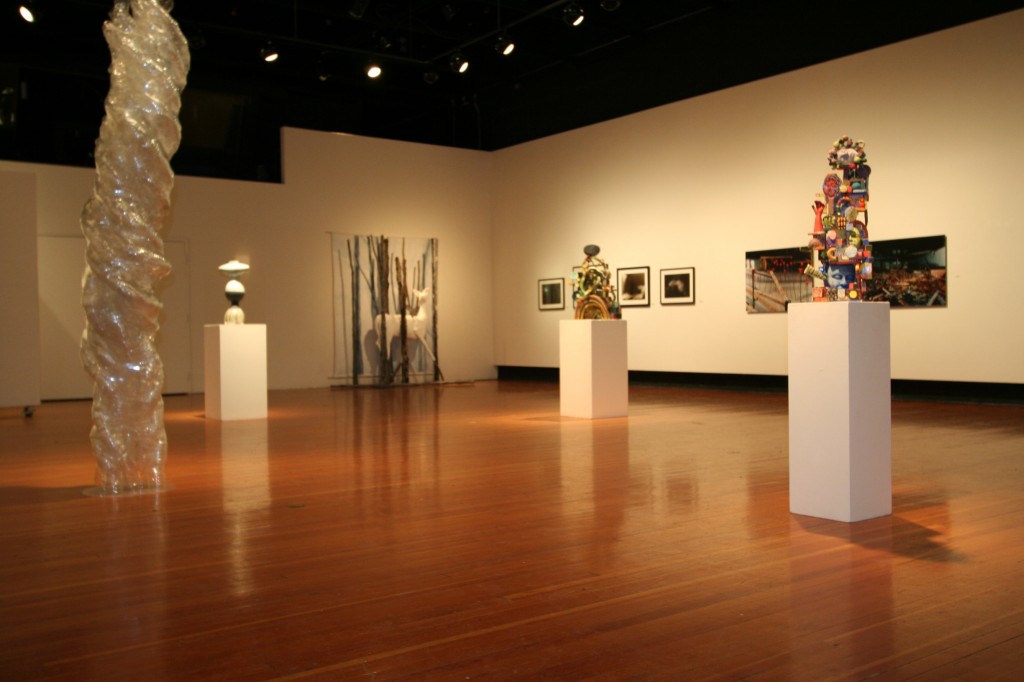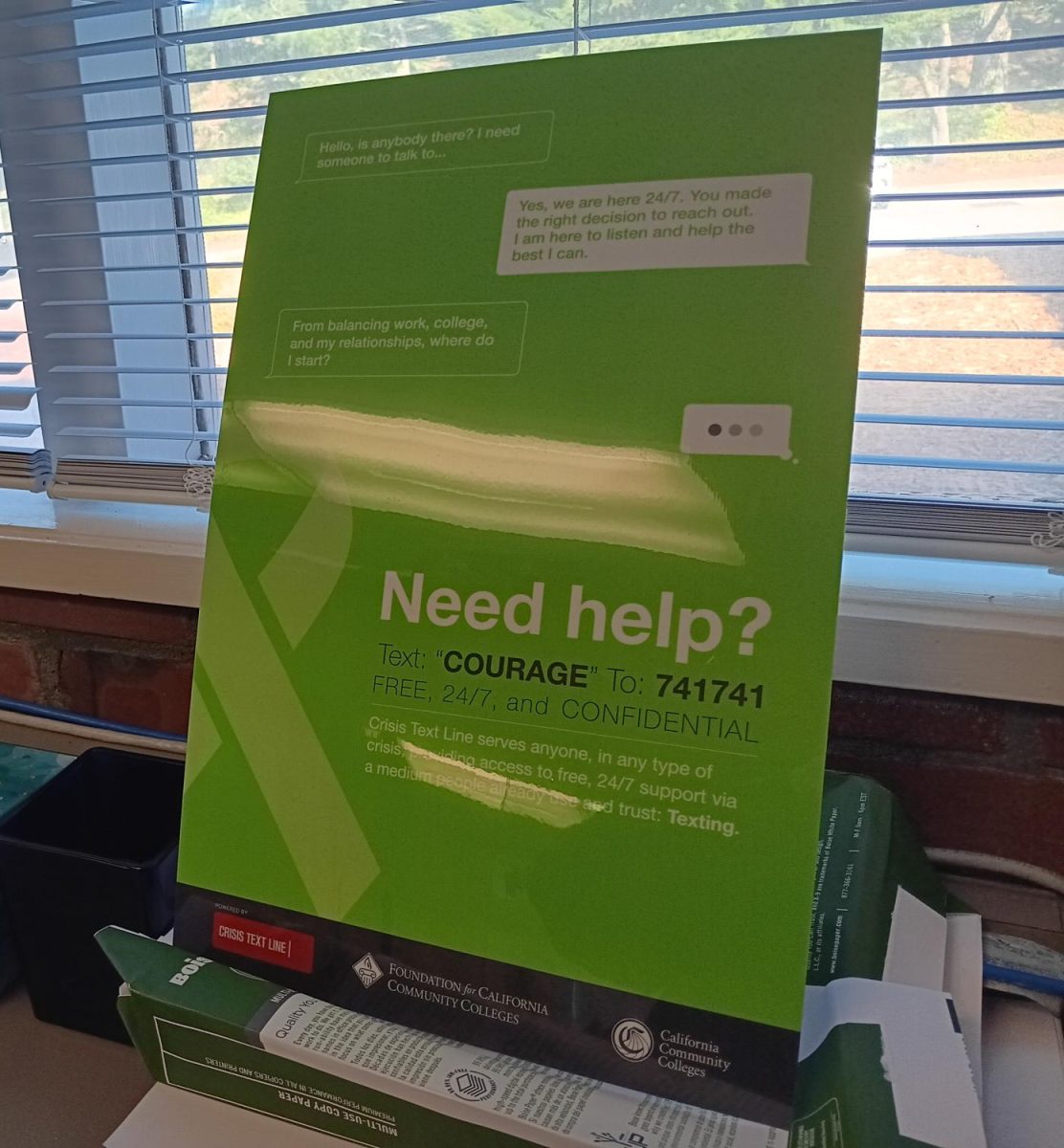The first faculty exhibition since the Fall of 2008 proved to be a successful and popular event and was the first to make use of the newly installed gallery lights that cost over $6,000, according to Gallery Director Paul Bridenbaugh.
Despite a recent burglary on the gallery’s third opening night, where two art pieces were stolen, the Faculty Art Exhibition stayed open until Oct. 8 with no further break ins.
While other schools feature work of only full-time teachers, Skyline’s exhibition included work from all art instructors. However, knowing that there are only two full-time instructors at Skyline, it makes sense that it is open to all.
Drawing an estimated 300 attendees during its reception on Sept. 16, many came to admire the wide variety of mediums and styles, while students came to see what their art teachers were really capable of.
Dean of Social Science and Creative Arts, Donna Bestock, noted how it was good for students to see their teachers work and their varying styles.
“I am so proud of my faculty members,” said Bestock. “I think they do such beautiful, beautiful work; it is inspiring.”
Some realistic styles included Eileen David’s photo-like oil on canvas titled “Bernal Cut” which shows the colorful houses of San Francisco behind the twisted overpasses of Freeway 101, as well as small portrait drawings by Noah Buchanan.
There were also abstract works like the swirling vortex of plastic cups that attached to the ceiling by Michael Ryan and paintings such as Bridenbaugh’s three untitled works of simple geometric shapes painted with only three to four solid colors.
“I start with notions and visual ideas not based on words,” said Bridenbaugh.
He stressed that he hopes his work provides open readings that illicit different interpretations. He also said that while his personal work is mostly abstract, he teaches traditional techniques to his students because it is important to learn the basics first.
Other abstract works included ceramic sculptures by Ilana Crispi and Tiffany Schmierer. Crispi’s tall, bulbous, and glazed ceramic sculpture stood on a pedestal reminiscent of a head or a totem pole.
Schmierer’s low-fire ceramic pieces were complex and visually dense, consisting of separate ceramic pieces crowded together with many different colored glazes causing the viewer to see something new each time they looked at it: a robin bird, puzzle pieces, a red hand, and serene looking faces.
One sculpture that generated contrasting views was the hydro-cal (like plaster but harder and more durable) sculpted deer surrounded by acacia trees by Ellen Lowenstein titled “The Forest.”
According to the morning gallery watch, Wasan Hasan, Lowenstein’s deer attracted many viewers and different interpretations which were mostly divided on whether the deer was in pain or at peace.
Ceramic student Victoria Vargas said that the deer made her feel peaceful because it appeared to be floating in the woods, referring to how the deer’s legs turned into tree roots.
Others saw the deer in pain, such as Bridenbaugh, because of the tree limbs that intersected through the deer’s body, reminding him of the paintings of Saint Sebastian where arrows pierce bodies of people. Lowenstein’s intention, however, was different and she was surprised by the varied reactions.
“I was trying to capture that moment when [a deer] looks at you and you look at them, in that moment you both are joined together in a wild state where the human becomes one with the deer,” said Lowenstein. “It is an extraordinary moment and suddenly they are off in the forest and they just disappear.”
Lowenstein said she was inspired by the deer that live near her house and was attracted to their illusive and magical qualities when they take flight and vanish into the forest.
Other works based on illusiveness were the black and white color washed photographs of Arthur Takayama that showed partially lit male nudes with hidden faces. Takayama said that he “uses the body as a landscape,” and that ambiguity is the theme for his work achieved by taking out visual clues that would give the viewer a sense of place and person.
“I love black backgrounds because they are uninformative,” said Takayama.
With so many different mediums and styles, gallery curator Bridenbaugh said it was a challenge trying to figure out where to place the pieces in the gallery. For instance, Jody Keane’s giant peach painting, appropriately titled “Georgia Dusk,” was hung next to a photograph of a demolished construction site by Diane Jones.
“The placements were all intentional,” said Bridenbaugh, explaining that he placed Jones’ and Kean’s pieces next to each other because they both had high visual traffic: Kean’s with the scattered fruit and Jones’s with the scattered wood.
Indeed, even though styles varied, surrounding pieces complimented each other and the gallery as a whole felt cohesive and complete. The Faculty Art Exhibition was an inviting way start off the Fall semester which allowed students and coworkers to get to know faculty in a more personal light.
Gallery Information
What: Faculty Art Gallery Exhibition
When: Sept 7 to Oct. 8
Where: Building 1 next to Parking Lot E
Gallery Hours:
Monday 11:00 a.m. – 7:00 p.m.
Tuesday 10:00 a.m. – 7:00 p.m.








